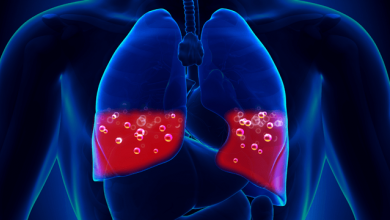Search results
Author(s):
Rebecca L Attridge
,
Rebecca D Moote
,
Deborah J Levine
Added:
3 years ago
Pulmonary hypertension is classified into five groups by the World Health Organization (WHO). Group 1, pulmonary arterial hypertension (PAH), is a progressive disease characterized by an elevation in pulmonary arterial pressure and pulmonary vascular resistance that may progress to right heart dysfunction and failure.1 PAH is defined as a mean pulmonary artery pressure (mPAP) ≥25 mmHg at rest,…
View more
Author(s):
Abdulah Alrifai
,
Mohamad Kabach
,
Jonathan Nieves
,
et al
Added:
3 years ago
More than 10 million Americans suffer annually from angina.1 For decades, most of the attention has been focused on epicardial coronary artery disease (CAD). In a European registry of 11,000 stable angina patients, 65% of women and 32% of men had no obstructive CAD (<50% stenosis); however, multiple other studies have demonstrated only 30% of patients have significant obstructive epicardial…
View more
Author(s):
Clyde W Yancy
Added:
3 years ago
The US population is characterized by significant racial/ethnic demographic transitions with an emerging number of special populations at risk for cardiovascular disease. Amongst the special populations with heart disease, it is heart failure in African-Americans that has become the prototypical model.
Heart FailureÔÇöAn Enigmatic Disease in African-Americans
Chronic heart failure is no longer…
View more
Author(s):
James Udelson
Added:
3 years ago
Dr James Udelson (Tufts Medical Center, Boston, MA, US) discusses the CAPACITY HFpEF trial which was a multicenter, randomized, double-blind, placebo-controlled, phase 2 study evaluating the sGC stimulator praliciguat over 12 weeks in patients with HFpEF.
Questions:
1.What does CAPACITY HFpEF aim to address?
2.Can you tell us about the mechanism of sGC stimulators and why they may help HFpEF…
View more
Author(s):
Naomi Abe
,
John D Bisognano
Added:
3 years ago
Hypertension is the most common chronic disease in the US, affecting 29% of the adult population.1 Once considered a benign, compensatory mechanism for ageing, high blood pressure (BP) is now recognised as an important risk factor for cardiovascular disease. It is estimated that inadequate BP control is responsible for 62% of cases of cerebrovascular disease, 49% of cases of ischemic heart…
View more
Author(s):
James De Lemos
Added:
3 years ago
Acute coronary syndromes (ACS) is an umbrella term comprising a spectrum of clinical conditions ranging from unstable angina to non-ST elevation myocardial infarction and ST elevation myocardial infarction. ACS begins when an atherosclerotic plaque ruptures or erodes and a platelet-fibrin clot obstructs coronary blood flow. These critical disorders are a major cause of emergency medical care and…
View more
Author(s):
Hossein-Ardeschir Ghofrani
,
Ralph T Schermuly
,
Norbert Weissmann
,
et al
Added:
3 years ago
Pulmonary arterial hypertension (PAH) has an estimated prevalence of 15–25 cases/million population.1 This chronic, progressive disease is defined by a mean pulmonary arterial pressure >25mmHg in conjunction with normal pulmonary capillary wedge pressure <15mmHg.2 The disease is characterized by increased vascular resistance of the pulmonary microvasculature, ultimately resulting in right…
View more
Giselle Melendez
Research Area(s) / Expertise:
Job title: Assistant Professor
Author
Author(s):
Shamai A Grossman
Added:
3 years ago
Introduction
Congestive heart failure (CHF) is an imbalance in pump function in which the heart fails to maintain the circulation of blood adequately. The most severe manifestation of CHF, pulmonary edema, develops when this imbalance causes an increase in lung fluid secondary to leakage from pulmonary capillaries into the interstitium and alveoli of the lung.
CHF can be categorized as forward…
View more
Coronary Vasospasm
Author(s):
Jingwen Huang
,
Rebecca Steinberg
,
Matthew J Brown
,
et al
Added:
10 months ago
Article














